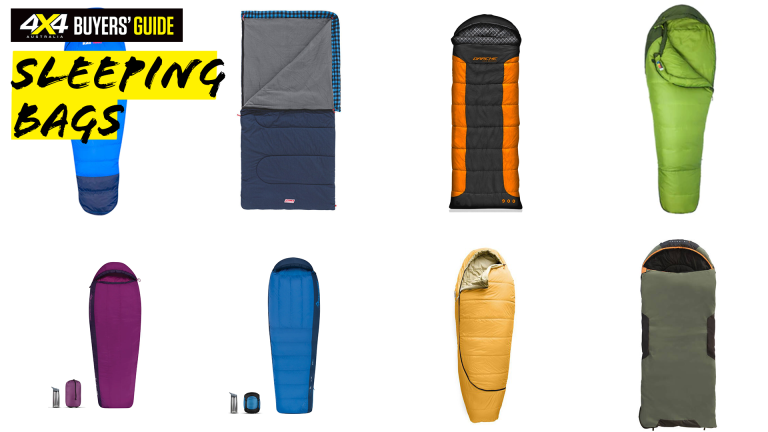
We’ve lined up the best sleeping bags in Australia so you can get the best night’s sleep on your camping adventures. We reviewed eight sleeping bags from Darche, Coleman, Wanderer, Marmot, Sea To Summit, BlackWolf and The North Face to see how they stack up (or should we say lie down).
Sleeping bags play a big role in enjoying the camping experience. With so many options on the market, it’s easy to prevent a bad night’s sleep from cold or discomfort. If you put some thought in to choosing the right sleeping bag for you, instead of just grabbing the cheapest option, you’ll appreciate it for many years to come.
The best sleeping bag is the one that will keep you warm and comfortable the whole night through. If you are hiking, you’ll want something that is lightweight and packs down small. If you are car camping, these points may not be your top consideration and you can go with a lower-cost sleeping bag.
Whatever your set-up, there’s a lot to consider when choosing the right sleeping bag for each individual camper. So check out our guide to choosing the best sleeping bag for you, as well as our picks for the top sleeping bags in 2024.
| DARCHE COLD MOUNTAIN 900 | BLACKWOLF HIKER 500 | COLEMAN PILBARA C-5 SLEEPING BAG | SEA TO SUMMIT TREK DOWN III | NORTH FACE ECO TRAIL SYNTHETIC 35 | MARMOT TRESTLES 30 | WANDERER XFLAME TOURER EXTREME | SEA TO SUMMIT QUEST I WOMENS | |
|---|---|---|---|---|---|---|---|---|
| Shape: | Rectangular with hood | Mummy | Rectangular without hood | Rectangular / Mummy | Rectangular / Mummy | Mummy | Rectangular with hood | Rectangular / Mummy – w/ wider hip section |
| Filling: | Synthetic | Down | Synthetic | Down | Synthetic - recycled materials | Synthetic | Synthetic | Synthetic |
| Warmth rating: | -12°C | -2°C | -5°C | -1°C (Trek I), -8°C (Trek II) , -12°C (Trek III) | 2°C | -1°C | -10°C | 3°C |
| Weight: | 2.7kg | 1.2kg | 3.3kg | 1.109kg | 1.106kg | 0.918kg | 4.08kg | 1.030kg |
DARCHE COLD MOUNTAIN 900
Things we like
|
Not so much
|
For a lower-priced sleeping bag, the warmth rating and versatility of the Cold Mountain 900 is hard to beat. Darche has designed this lightweight, rectangular-shaped sleeping bag with cold conditions in mind. The synthetic-filled, double-layered sleeping bag is rated to -12°C. It has a water resistant outer shell and a silk-like liner to keep you comfortable inside.
However, the Cold Mountain 900 is versatile enough to use through all the seasons. For warmer weather there is a foot-end zip to allow more airflow. Plus, you can unzip the sleeping bag completely to use it as a blanket, or to join two together.
Size wise, you can choose how much wiggle space you need from three options: 900mm, 1100mm or 1400mm wide. All three sizes come with a compression bag to shrink it down for storage and packing. Bonus points if you have a Darche swag or rooftop tent, as this sleeping bag was purpose-built to fit the Darche camping range.
BLACKWOLF HIKER 500
Things we like
|
Not so much
|
BlackWolf’s Hiker 500 is a lightweight sleeping bag for hikers planning an adventure in colder conditions. We rate it because it’s a down-filled sleeping bag that won’t break the bank. The Hiker 500 is filled with responsibly sourced, water-repellent down and has a comfort temperature rating of -2°C, with a lower limit of -8°C. So it will give you peace of mind and a good night’s sleep on cold winter nights.
The team at BlackWolf had the cold, tired hiker in mind when adding features such as a one-handed hood adjustment and glow-in-the-dark zipper pullers. Size wise, the Hiker 500 is built to comfortably fit anyone to a height of 2 metres. It’s a quality hiking sleeping bag without the squish-factor. It also comes with a compression sack for packing it to hike and a mesh storage bag for airing it out in-between adventures.
COLEMAN PILBARA C-5 SLEEPING BAG
Things we like
|
Not so much
|
The Pilbara C-5 Sleeping Bag has been designed for anyone wanting an incredibly comfortable – and affordable – night’s sleep. Despite the low price you are still getting a comfortable, durable and spacious sleeping bag.
Coleman has created this sleeping bag entirely from cotton with a soft neck cuff for extra comfort. It is a rectangular shape, without a hood. However, there is a flannel inner sheet and cosy foot fleece at the bottom of the bag.
For warmer conditions the flannel liner can be removed and the foot zipper opened to allow more airflow. The entire sleeping bag is durable and machine washable. It’s a great all-rounder for camping trips in all seasons and it’s a sleeping bag that you’ll appreciate for many years to come.
SEA TO SUMMIT TREK DOWN III
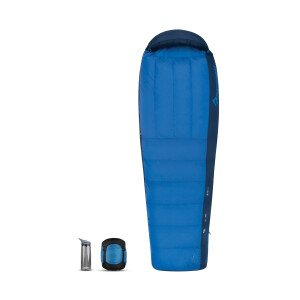
Specifications:
- Shape: Rectangular / Mummy
- Filling: Down
- Warmth rating: -1°C (Trek I), -8°C (Trek II) , -12°C (Trek III)
- Weight: 1.109kg
Things we like
|
Not so much
|
The Trek Down III sleeping bag by Sea To Summit is an excellent lightweight, rectangular / mummy-shaped sleeping bag. The shape gives more room inside, yet this sleeping bag is perfect for hiking with its small pack-down size. It’s also going to keep you warm in the coldest Aussie conditions, with a maximum -12°C rating.
The premium duck-down insulation is RDS certified, and the Trek III comes with a shaped hood and oversized zipper draft tubes. It also has a draft collar for a snug fit around the shoulders. If you don’t need this much warmth in a sleeping bag, there are two other Trek Down options with lower warmth ratings and even less weight – the Trek I and Trek II.
NORTH FACE ECO TRAIL SYNTHETIC 35
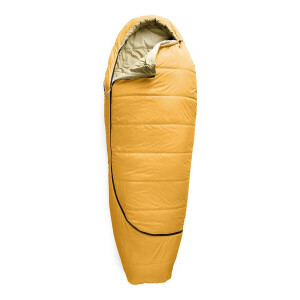
Specifications:
- Shape: Rectangular / Mummy
- Filling: Synthetic - recycled materials
- Warmth rating: 2°C
- Weight: 1.106kg
Things we like
|
Not so much
|
The Synthetic 35 sleeping bag is made using 100 per cent recycled materials. It is part of The North Face’s Sustainable collection and as well as being eco-friendly, it’s got some nifty design features that have been created with the keen camper in mind.
The shape allows for a wider knee section – great for anyone who tosses and turns at night. The J-design zip works well to keep the heat in and allow for more mobility. The footbox also ensures extra warmth right down to the toes. As a warmer-weather sleeping bag, this is a value-for-money option that is going to keep you comfortable on many camping adventures to come.
MARMOT TRESTLES 30
Things we like
|
Not so much
|
The space-saving, mummy-shaped Trestles 30 sleeping bag by Marmot is an affordable option for anyone wanting a lightweight, warm sleeping bag. The mummy-shaped design seals in your heat to keep you warm throughout the night. Plus, it makes for a lighter and more compact sleeping bag.
The Trestles 30 is designed to withstand cool and damp conditions, with the synthetic insulation keeping you warm even if things get wet. It has a 3D footbox to keep your toes toasty and a secondary zipper to allow more airflow if needed. It’s an affordable, synthetic option for hikers. However, if you are after a lot of internal space, this is probably not the sleeping bag for you.
WANDERER XFLAME TOURER EXTREME
Things we like
|
Not so much
|
For winter adventurers who are not worried about weight in a sleeping bag – Wanderer has created the XFlame Tourer Extreme. Built for extreme adventures, the premium synthetic insulation will keep you cosy even in conditions of -10°C.
The rectangular-shaped sleeping bag has a hood, a water resistant outer shell and a cotton flannel lining for maximum comfort. To make it more versatile the lower region of the sleeping bag can be unzipped in warmer conditions to allow more airflow.
SEA TO SUMMIT QUEST I WOMENS

Specifications:
- Shape: Rectangular / Mummy – w/ wider hip section
- Filling: Synthetic
- Warmth rating: 3°C
- Weight: 1.030kg
Things we like
|
Not so much
|
Sea to Summit has designed the Quest I sleeping bag specifically for women. It has switched out the mummy shape for a tapered design that is narrower at the shoulders and wider at the hip. The synthetic filing and insulated footbox is enough to keep you warm in cold conditions, while still being lightweight for hiking.
It’s a good value sleeping bag that can also be opened up fully or just unzipped at the footbox to be used in warmer conditions. If you are after a warmer sleeping bag, the more expensive Quest II has a -3°C rating. Both Quest sleeping bags have a regular- or long-length option.
HOW WE REVIEW PRODUCTS
4X4 Australia has been reviewing four-wheel drive vehicles, aftermarket products and camping gear for more than 40 years. When looking for the best sleeping bags in Australia, there are some things that are essential to make sure you sleep soundly on your camping adventures.
When we compared each of the products in the list with hundreds out there we looked at the warmth rating, weight, filling, versatility and price. We also searched for additional features that make these sleeping bags stand out from the rest.
We looked at hundreds of user reviews and drew on our own experience with sleeping bags to make sure our recommendations are for the best on the market.
Disclosure: When you buy through our links, we may earn a commission. We also include products that we do not earn a commission from.
BUYERS' GUIDE TO SLEEPING BAGS
How to choose the best sleeping bag
To choose the best sleeping bag for your snoozing needs, consider where and when you will be using it. For long multi-day hikes, you might want to invest more money in a lightweight option. For a throw-it-in-the-car-and-go option, you can generally get away with spending less.
However, in general, the best sleeping bags will be durable, comfortable and warm enough for the conditions you are planning to camp in. Consider the following things when choosing a sleeping bag.
What filling do you want in a sleeping bag?
Sleeping bags come with one of two fillings – down or synthetic. Down is a lightweight option which provides the best warmth-to-weight ratio. Synthetic is a cheaper option which retains its insulation better than down does in wet conditions.
Down sleeping bags
Down sleeping bags are filled with duck or goose down and are lighter and more compact than synthetic options. They also provide more warmth because of the way the down traps and holds air. However, they are more expensive than synthetic-filled sleeping bags.
It’s important to consider that down does not insulate well if exposed to wet conditions. Often the down in sleeping bags is water resistant but not waterproof. It can also be tricky to wash and it requires animal products to make. When choosing down products, check it complies with the globally-used Responsible Down Standard (RDS) certification.
Synthetic sleeping bags
Synthetic-filled sleeping bags are generally more durable, including withstanding exposure to moisture. The filling is made with synthetic materials such as polyester. Because of this, it is less expensive but still provides good insulation.
When choosing a synthetic-filled sleeping bag, keep in mind that it will likely be heavier than down-filled options and will not compress as well. However, if you have space in your camping set-up and are not concerned about weight, synthetic is a great option.
What shape do sleeping bags come in?
Sleeping bags come in three different shapes. The shape will affect the amount of airflow, the warmth rating and the weight. It is also important to choose a shape – and length – that fits your body type or you are not going to be comfortable when you close the zipper.
Rectangular
Rectangular sleeping bags have plenty of space, from the shoulders down to the toes. As they use more material, they are generally heavier and bulkier to pack down.
Mummy
Mummy sleeping bags have less space inside which decreases the airflow and therefore increases the warmth. They also are lighter due to using less material. However, the tight-fitting shape is not comfortable for everyone.
Combo: Rectangular / Mummy
Many sleeping bags now come in a tapered shape that is a cross between the rectangular and mummy shapes. This means less airflow and more warmth without restricting the comfort level.
How warm do you need a sleeping bag to be?
The warmth rating of sleeping bags is an important consideration. Knowing what conditions you plan to use the sleeping bag in will help you choose the best warmth rating.
However, the warmth rating of sleeping bags also depends a lot on the user. Consider whether you usually run hot or cold at night, what PJs you wear, and whether you will use a sleeping mat, swag or inflatable mattress underneath. All these things can affect how much warmth is retained.
As a quick reference, here’s our guide to temperature ratings of sleeping bags:
- 5°C to 10°C warmth rating: Perfect for summer camping
- 0°C warmth rating: Good sleeping bag for cooler conditions
- -5°C to -10°C warmth rating: Will last you through an Aussie winter camping adventure
How lightweight do you need your sleeping bag to be?
If you are planning on completing some overnight hikes, then the lighter the sleeping bag, the better. However, you still want to be sure it has a good enough warmth rating – and that it is a comfortable fit. Sometimes choosing the lightest sleeping bag option can compromise these two things.
For hikers, there are some ultra-light sleeping bags on the market that are down-filled and come with a hefty price tag. If you have a lot to carry on hiking trips, this might be worth the investment. However, there are plenty of lightweight options, around the 0.8 to 1kg weight mark, that are much more affordable.
While down filling might seem like the best option for hiking, there are a lot more lightweight synthetic options on the market these days which tend to be cheaper and will be better suited to potential wet conditions.
What are the best features of a sleeping bag?
Just like all camping gear, there are plenty of convenient features packed in to sleeping bags these days. Here’s an idea of some of the best features that are worth checking for when choosing your sleeping sack.
Separate foot zip: to air out your toes in the warmer weather.
This feature allows more versatility to use the sleeping bag in all conditions, as the extra airflow will keep you cooler in summer.
Optional bag lengths and width: to pick the best sized sleeping bag for you. The best sleeping bags will have options for larger sizing, so you can grab the perfect sleeping bag in the size that fits you best.
Draft tubes: for extra help sealing in the warmth.
Draft tubes run along the inside of the bag’s zipper to keep the air from escaping.
Sleeping bag hood: to prevent heat loss via your head.
Most, but not all, sleeping bags come with hoods these days, but if you are wanting a bag for colder conditions, a hooded sleeping bag is a good option.
Inner zippered pocket: to stash your valuables.
This common feature is excellent for having a safe place to keep your car keys, phone or other valuables, and prevent devices from losing their charge in cold weather.
Price considerations
Like most camping gear, there is a huge variation in price when it comes to sleeping bags on the market. Also, like most camping gear, it’s worth considering how much use you want to get out of your sleeping bag before needing to replace it. If you camp regularly and want value for your money, it’s worth investing in a more expensive sleeping bag that will last you for many more camping adventures to come.

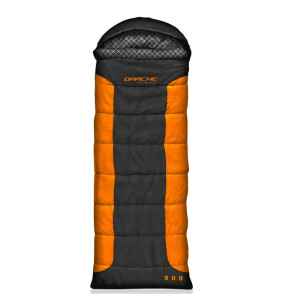
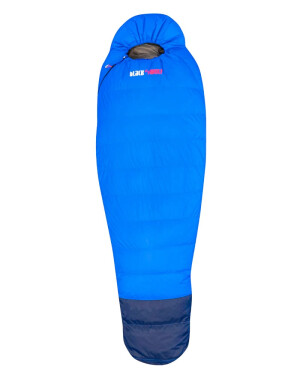
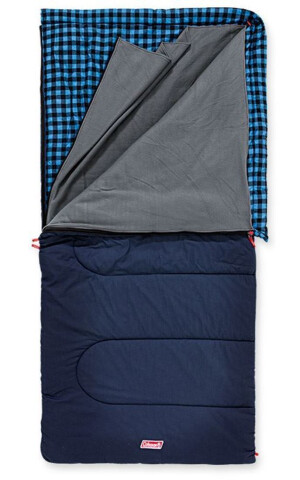
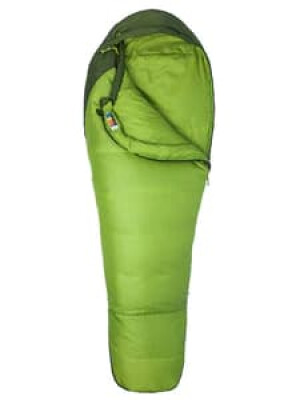

COMMENTS